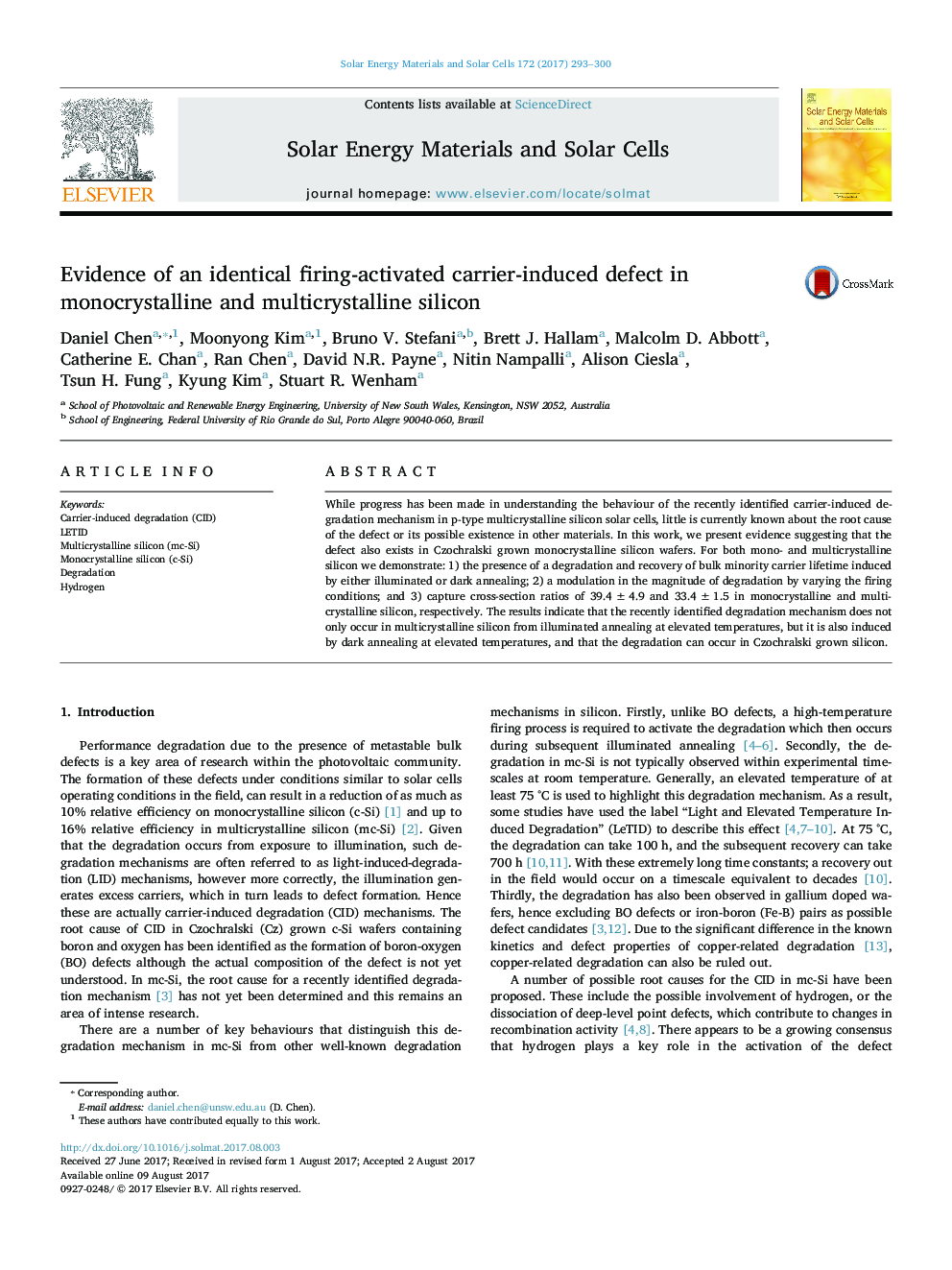| Article ID | Journal | Published Year | Pages | File Type |
|---|---|---|---|---|
| 6456948 | Solar Energy Materials and Solar Cells | 2017 | 8 Pages |
â¢Identical carrier-induced degradation in mono- and multi-crystalline silicon materials.â¢Degradation and recovery cycle induced via a purely thermal route.â¢Defect activation and degradation mechanics have a dependency on firing conditions.â¢Shockley-Read-Hall statistics show similarities to defects formed under illumination.
While progress has been made in understanding the behaviour of the recently identified carrier-induced degradation mechanism in p-type multicrystalline silicon solar cells, little is currently known about the root cause of the defect or its possible existence in other materials. In this work, we present evidence suggesting that the defect also exists in Czochralski grown monocrystalline silicon wafers. For both mono- and multicrystalline silicon we demonstrate: 1) the presence of a degradation and recovery of bulk minority carrier lifetime induced by either illuminated or dark annealing; 2) a modulation in the magnitude of degradation by varying the firing conditions; and 3) capture cross-section ratios of 39.4 ± 4.9 and 33.4 ± 1.5 in monocrystalline and multicrystalline silicon, respectively. The results indicate that the recently identified degradation mechanism does not only occur in multicrystalline silicon from illuminated annealing at elevated temperatures, but it is also induced by dark annealing at elevated temperatures, and that the degradation can occur in Czochralski grown silicon.
